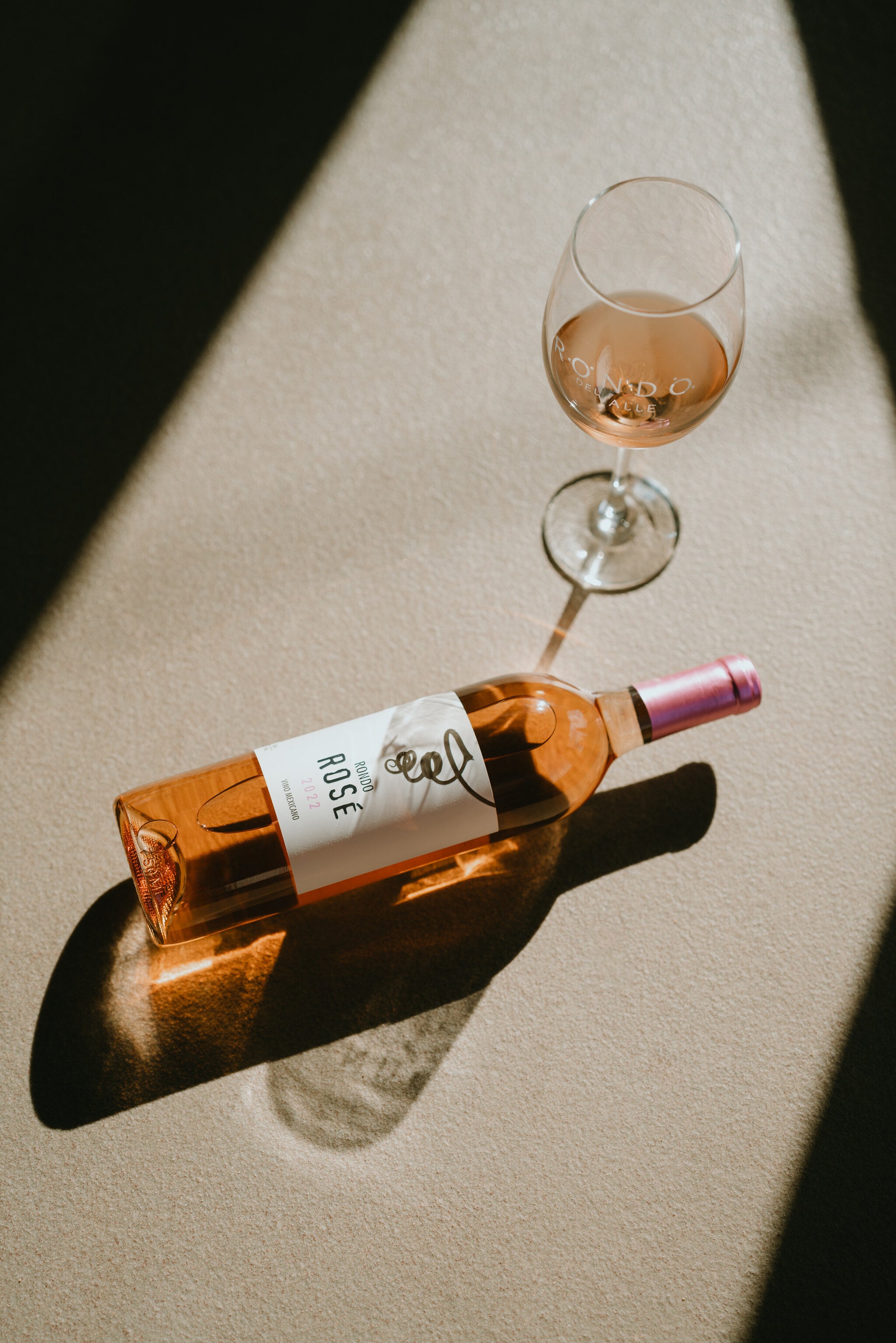La principal diferencia en el proceso de producción entre el vino rosado y el vino tinto radica en la duración y la intensidad del contacto entre las pieles de la uva y el mosto durante la fermentación.
Aquí hay una comparación de ambos procesos:
Producción de vino tinto:
- Selección de uvas: Se seleccionan uvas tintas específicas destinadas a producir vino tinto.
- Maceración: Las uvas se aplastan y se dejan en contacto con las pieles durante un período prolongado, que puede durar desde unos días hasta varias semanas. Durante este tiempo, los pigmentos y los compuestos aromáticos de las pieles se transfieren al mosto, lo que le da al vino su color, sabor y aroma característico.
- Fermentación: Después de la maceración, el mosto fermenta junto con las pieles y las semillas. Durante este proceso, los azúcares se convierten en alcohol, y los taninos y otros compuestos se extraen de las pieles, dando al vino tinto su estructura y complejidad.
- Prensado: Una vez que la fermentación está completa, se prensa la mezcla de mosto, pieles y semillas para extraer el vino. El vino se separa de los sólidos y se traslada a barricas u otros recipientes para su envejecimiento.
Producción de vino rosado:
- Selección de uvas: Se utilizan uvas tintas, pero el proceso puede variar según el método de producción.
- Maceración: En algunos métodos, las uvas se someten a una maceración corta, donde el mosto está en contacto con las pieles durante un período de tiempo breve, generalmente de unas pocas horas a un día. Esto permite una extracción limitada de color y aromas de las pieles, dando como resultado un color rosado característico.
- Fermentación: Después de la maceración, el mosto fermenta por separado de las pieles, lo que resulta en un vino con menos extracción de taninos y pigmentos que el vino tinto.
- Prensado: Una vez que se alcanza el nivel deseado de extracción de color y sabor, se prensa el mosto y se separa de las pieles. El vino rosado puede ser fermentado en tanques de acero inoxidable u otros recipientes, y luego embotellado para su consumo.
En resumen, la principal diferencia entre el proceso de producción de vino rosado y vino tinto es la duración y la intensidad del contacto entre las pieles de la uva y el mosto durante la fermentación, lo que da como resultado vinos con características de color, aroma y sabor distintivas.
Nuestro vino ¨Rosé¨ que producimos en Rondo del Valle, es elaborado con uvas Grenache y Cabernet Sauvignon, ofreciendo una experiencia sensorial única. Aquí hay algunas características típicas que podrías esperar en tu experiencia:
- Color: Típicamente presenta un color rosa pálido o rosa salmón, brillante y atractivo.
- Aromas: Se destacan los aromas a frutas con hueso como duraznos, albaricoques y ciruelas, así como notas frescas y jugosas de fresas. Estos aromas frutales se combinan con sutiles matices florales.
- Sabor: En boca, se experimentan sabores frescos y vivaces, con una agradable acidez que resalta las notas cítricas de mandarina. También puede tener una ligera dulzura que equilibra la acidez y realza la fruta.
- Cuerpo: Suele tener un cuerpo ligero a medio, lo que lo hace muy refrescante y fácil de beber.
- Final: El final es limpio y refrescante, con una persistencia agradable que invita a otro sorbo.
En cuanto a las recomendaciones de maridaje, su versatilidad lo hace perfecto para acompañar una variedad de platos:
- Pescados y mariscos: Su frescura y ligereza complementan muy bien los sabores delicados de pescados blancos, mariscos y crustáceos.
- Quesos: Va especialmente bien con quesos suaves y cremosos, como el brie o el queso de cabra, pero también puede acompañar quesos semiduros.
- Carnes: Aunque no es tan común maridar vinos rosados con carnes, su acidez y ligereza pueden ser un buen contrapunto para carnes blancas como pollo o pavo, así como para algunas preparaciones de cerdo.
En resumen, este vino rosado del Valle de Guadalupe es una excelente opción para quienes buscan una experiencia fresca y vibrante, tanto en aromas como en sabores, y su versatilidad lo convierte en un acompañamiento ideal para una amplia variedad de platos.



La vid está por llegar al Valle de Guadalupe
La Importancia y Características de una Cava de Vinos Subterránea